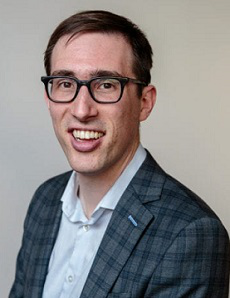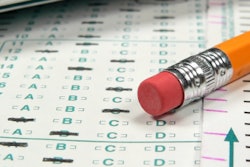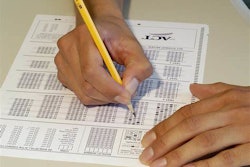Racial disparities and inequities persist in the enrollment and graduation of Black students at two-year and four-year public colleges and universities relative to their state populations, according to a new research report released Wednesday by The Education Trust.
Although the number of Black students attending public colleges has increased over the decades, national data indicate that “Black students are still severely underserved in public higher education despite having relatively identical college-going aspirations as their peers from different racial and ethnic groups,” wrote the study’s co-authors at Ed Trust, Dr. Andrew Howard Nichols, senior director for higher education research and data analytics, and J. Oliver Schak, senior policy and research associate for higher education.
 Dr. Andrew Howard Nichols
Dr. Andrew Howard Nichols
Outlined in detail in the report – “Broken Mirrors: Black Student Representation at Public State Colleges and Universities” – are four key findings based on data from 41 states:
· Black students are underrepresented at all but four of the four-year public schools examined, while Black enrollment at community and technical colleges doesn’t reflect the state’s racial composition of Black residents in about half of the states examined.
· Black graduates are underrepresented among associate’s-degree earners in 33 of the 41 states; only three states have equity between Black bachelor’s-degree earners and their state’s demographics; and eight states would have to more than double their numbers of Black bachelor’s-degree earners to match their state’s respective demographics: Wisconsin, South Carolina, Ohio, Nebraska, Michigan, Kansas, Hawaii and California.
· Black graduates are more likely than their White counterparts to be awarded certificates and associate’s degrees but less likely to earn a bachelor’s degree, with about half of the 41 states reporting double-digit gaps between the shares of Black and White graduates receiving bachelor’s degrees.
· An examination of 36 of the states indicated that three-fourths of them provide Black students less access than their White peers to selective four-year schools, and nine of the 10 states with the largest enrollment gaps are in the South – where more than 40 percent of Black Americans live.
 J. Oliver Schak
J. Oliver Schak
The report spreads the blame for the inequities on systemic racism, “not the result of deficits ascribed to Black students or their families,” and calls on state leaders to take “aggressive measures” to support Black students and eliminate disparities.
“Without question, systemic racism throughout the P-12 educational pipeline and broader society contributes to Black underrepresentation in higher education,” the report states. “But postsecondary leaders are also culpable for enacting policies and practices that further contribute to racial inequity.”
“However,” it continues, “if U.S. public colleges and universities are going to be true democratic engines of opportunity and social mobility, postsecondary leaders must find ways to ensure the student body and graduates of their institutions more closely mirror the racial and ethnic composition of the states in which their colleges reside. When access to postsecondary education – and the requisite support needed to complete a college degree – is withheld systematically from groups within our society, colleges and universities become sorting mechanisms that worsen social inequalities.”
Researchers explained their critical decision about how to benchmark states to define equitable representation. A case could be made for using the racial demographics of a state’s graduating high school cohort as a benchmark, while a different yet equally valid case could be made for using the overall racial and ethnic mix of the state in which an institution is located.
Nichols and Schak decided to define equitable representation as the racial and ethnic mix of a state’s population ages 18-49 “that could potentially benefit from attending college and receiving an undergraduate degree.” That approach led to development of two enrollment and degree-earner benchmarks for each state, one for four-year schools and another for community and technical colleges.
The inequities, embarrassingly severe in numerous states, point to “really severely broken” public institutions, said Nichols.
“Ultimately, this has to change,” he told Diverse. “It’s a matter of justice.”
The research focused on equity at public schools because they educate the vast majority of undergraduate degree-earners, he said, and despite resource issues have an obligation to promote racial equity – especially in states with sizable Black populations. The report lists six questions for state policymakers, education leaders, and other stakeholders to ask and answer as they look to eliminate the disparities.
The evidence of how a college degree contributes to upward social and economic mobility of individuals and benefits to wider society is too great not to do so, said Schack.
At a time when states continue to spend less money on higher education and segments of the public are placing less value on the cost of college, he said, “states would be well advised to find the money for this investment.”
LaMont Jones can be reached at [email protected]. You can follow him on Twitter @DrLaMontJones
This article first appeared in Diverse: Issues In Higher Education.









